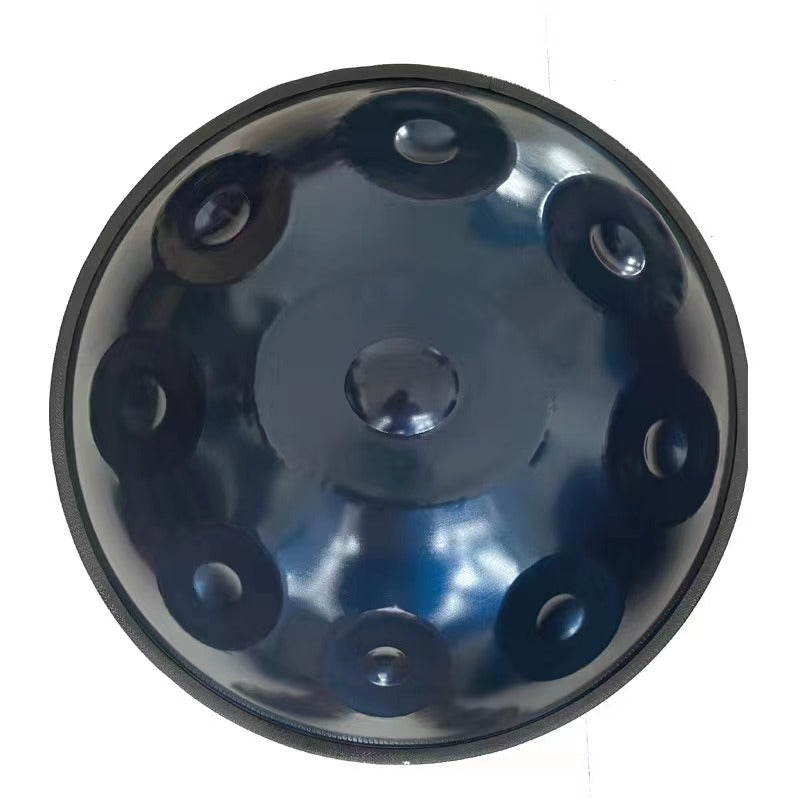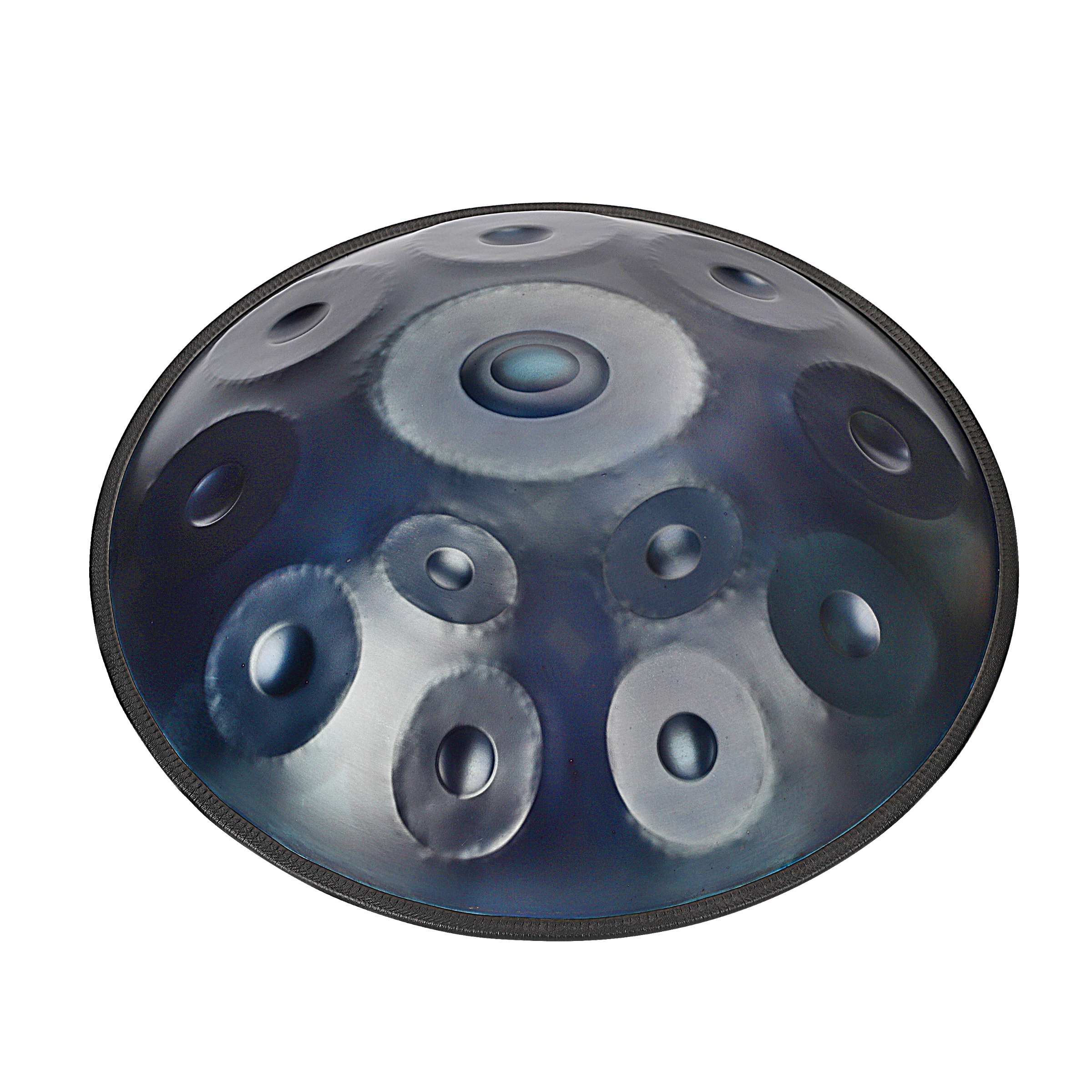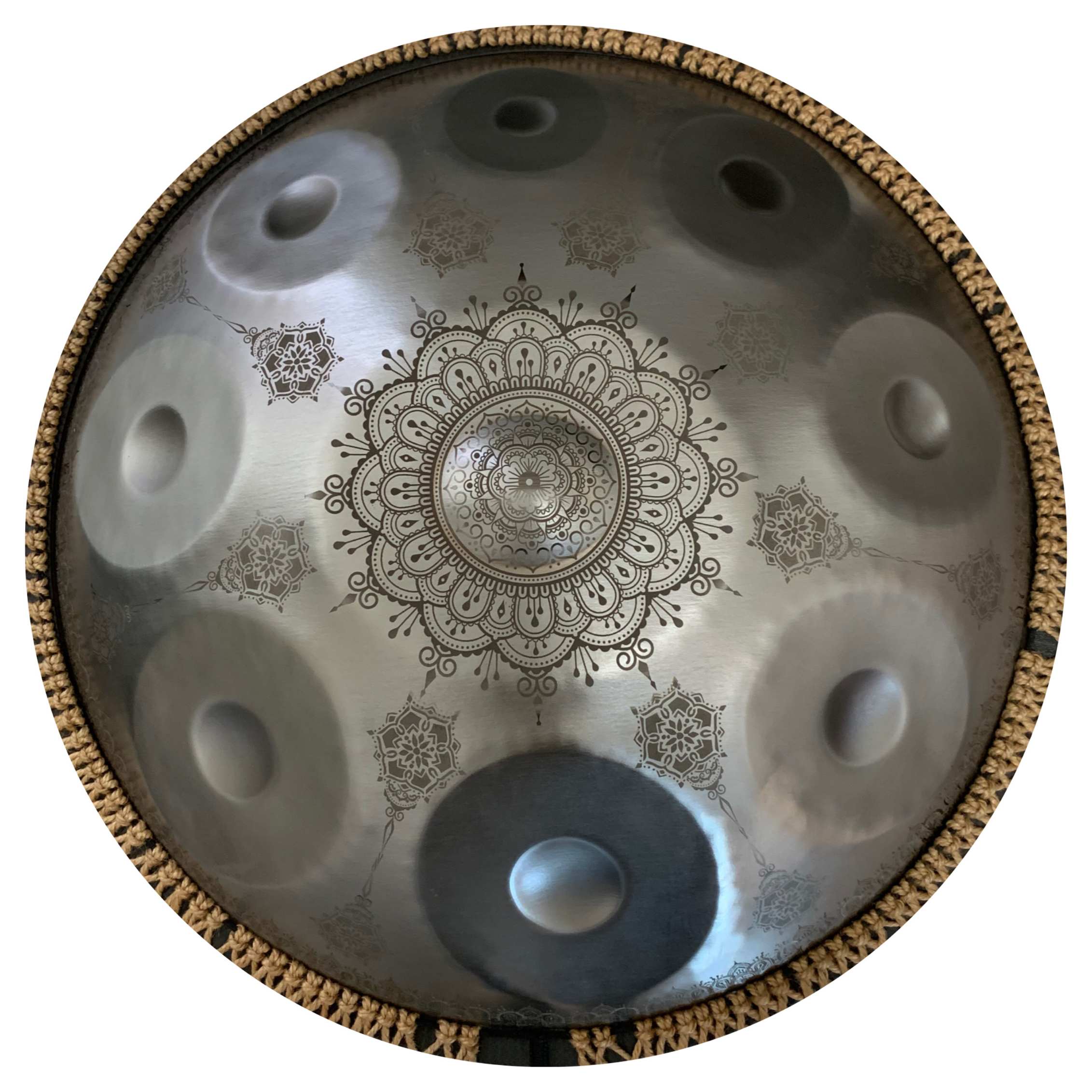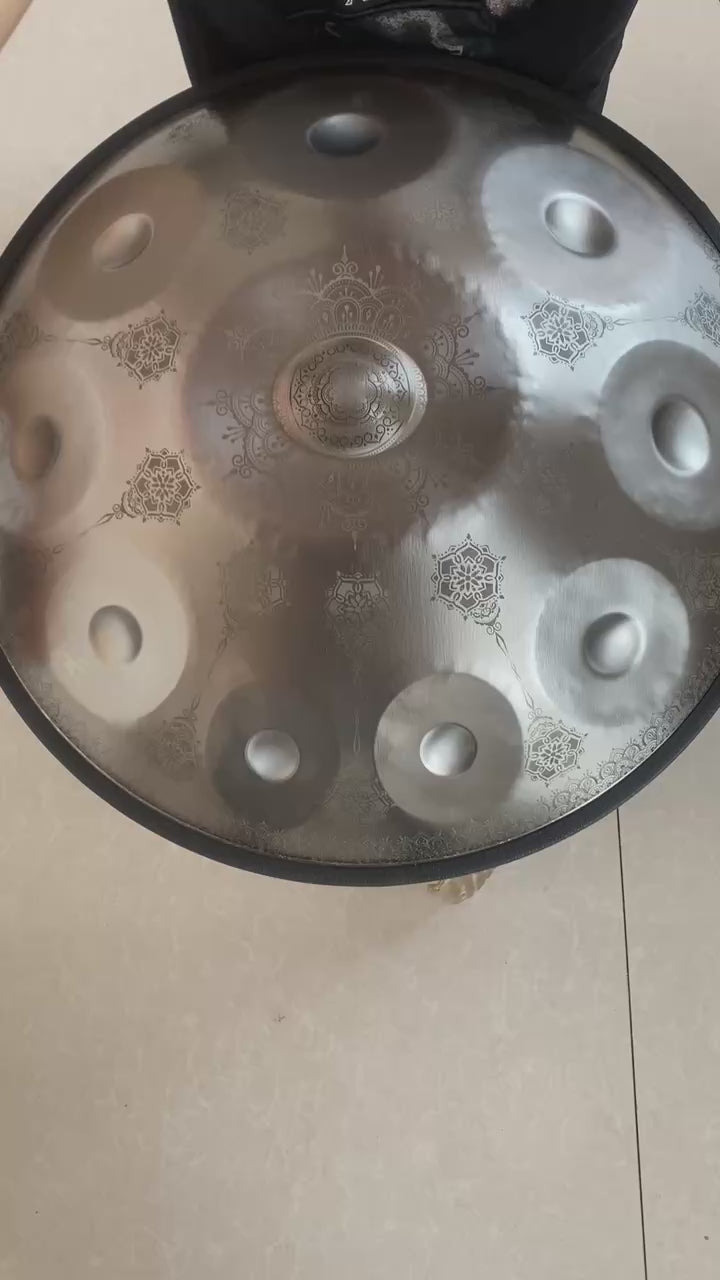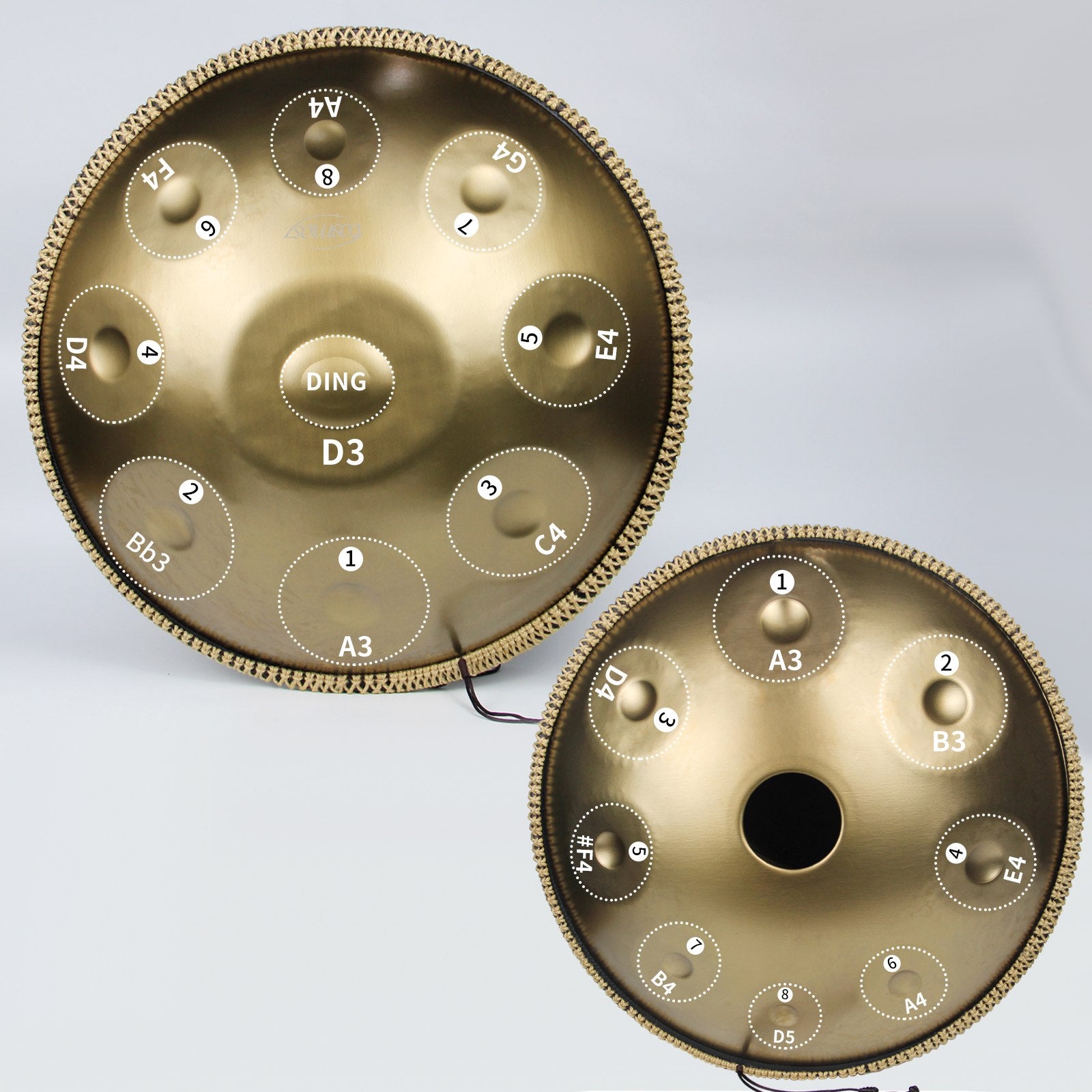
The sound of the instrument is typically unique and ethereal; a handpan musical instrument might catch your eye if you’re considering purchasing one. These days, however, there are many makers, a wide variety of materials (anodized vs. unanodized), and scales, so choosing the right handpan can be pretty overwhelming. This guide will prove helpful if you’re a veteran musician or a novice looking for the top handpan for novices based on client and expert surveys.
What is a handpan?
A handpan (also sometimes called a handpan drum or steel drum) is a relatively new percussion instrument. It consists of striking tuned notes arranged on a convex steel surface, the sound of which at once provides a distinctive note. The handpan was first developed by PANArt as the Hang® in 2001 and since then has been expanded into a new class of instruments made by makers all over the world.
- How Much Does a Handpan Cost?
Handpans, hang instrument, usually cost between $1,500 and $3,000 USD. But prices can vary greatly for reasons like craftsmanship, material, and the maker’s reputation. Remember that just because a product is expensive doesn’t mean it will be better quality. Listen to audio samples, watch videos, and read reviews about the maker, just to make sure you get good value.
- How to Choose Your Handpan
Selecting the correct handpan isn’t a matter of chance. Follow these tips to find the perfect match:
- Listen First: Look online to see different sound qualities. Use headphones to be able to know the tone, sustain, or balance.
- Test in Person: It is always best that you try a handpan before buying. Go to music festivals, workshops, or events and actually see the instrument (and play it).
- Select the Right Scale: There are all different scales of handpans, from major to minor, with different feeling tones to them. Research scales suitable to your taste and your own musical needs.
- Match Your Style: Determine what you want to get out of your input—something melodic and soothing or rhythmic and percussive.
- Materials Matter: Steel Choices for Handpans
Handpans are made from various types of steel, each with distinct benefits:
Raw Steel: Rust prone, requires regular maintenance, affordable.
Steel-Coated: Less durable if the coating is damaged but lightweight.
Nitrided Steel: These are rust resistant with a shorter sustain, exceptionally good for percussion.
Stainless Steel: Great rust resistance, good sustain, and good for melodic slow playing.
The sound and the string maintenance requirements are both affected by the material, so choosing your material will depend on your playing style and your environment.
- Those who learned handpan refer to its size and number of notes.
The handpans come in various sizes and numbers of notes. For any beginner (and relatively well for intermediates!), a standard 8-9 note layout is a good starting point. The more notes on an instrument, the larger and more complex the instrument, with more to play but greater difficulty to play and move.
Smaller handpans: They're easier to handle and travel with, plus good for players with shorter arms or a lack of physical strength.
Larger Handpans: Note range is expanded, and tones are offered in a lower register—perfect for the experienced player looking for broader tones.
- Finding a Reputable Maker
Since there are so many handpan makers around the world, it is hard to know who you can trust. Find makers with good reviews, nice websites, and that are contributing to the handpan scene. Social media groups and forums are good sources to get the recommendation.
- Waiting Lists: A few makers operate on a waitlist basis—you have to wait for them.
- Flash Sales: Makers often pop up on social media fora with limited sales.
- Direct Purchase: Ready-to-ship handpans are now available through many makers from their websites.
- Another reason I don’t recommend buying a handpan for beginners is because, well, they are expensive.
If you are a new handpan enthusiast, choose simplicity and quality. Seek out beginner handpans—those tuned to a universally pleasing scale, such as D minor—and made especially for human hands. They’re easier to play and more forgiving to learn.
- Protecting Your Investment
Handpans are durable but require care to maintain their sound quality and appearance:
- Maintenance: Regularly clean your handpan and use protective oil so as to not allow rust.
- Storage: Protect your instrument against physical damage as well as any environmental exposure using a sturdy case.
- Retuning Services: Occasionally, handpans will need retuning. Make sure your maker will do this for you, or look for an option nearby.
- How to dodge scams when buying
It’s natural that as the popularity of the handpan instrument grows, so too do scams. Protect yourself by following these guidelines:
- Check that the maker is genuine by reviews, forums, or community recommendations.
- Ask for photos and videos of the actual instrument you intend to purchase and ask to see those details close up.
- It’s also a case of if it looks too good to be true, steer clear of deals from unknown sellers.
- Buying a Second-Hand Handpan
Handpans can be purchased secondhand, but that’s risky. When buying used instruments:
- Be sure to meet the seller in person, test the handpan, and confirm its condition.
- When purchasing online, ask for proof of ownership and proof of the instrument being played very recently.
- Pay securely using payment methods that cover the buyer.
- The Joy of Owning a Handpan
While owning a handpan is just owning a musical instrument, it means much more, as it means connecting yourself with a unique art form. The handpan is versatile and can be played solo, used for meditation, or used in group jam sessions. It’s also a must-have for any musician, no matter which type of music you are looking to create.
Final Thoughts
Buying a handpan is an exciting spiral that takes a bit of patience and research. Understanding the qualities that make a great handpan and aligning your selection with your needs will not only help you purchase a handpan that speaks to your soul but also save you trouble on buying another handpan. If you’re searching for the best handpan drum steel drum, or the best handpan for beginners, one is out there for you.
Happy Playing!!


